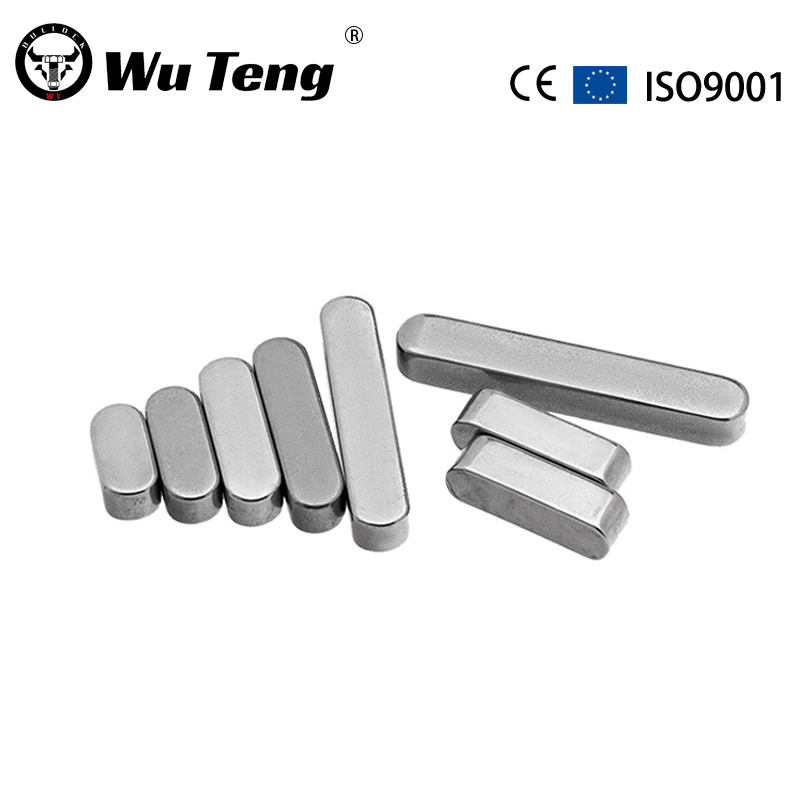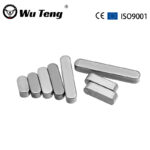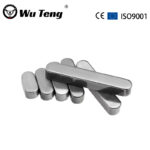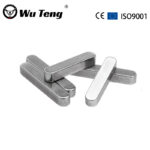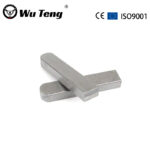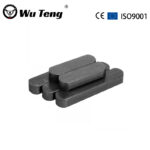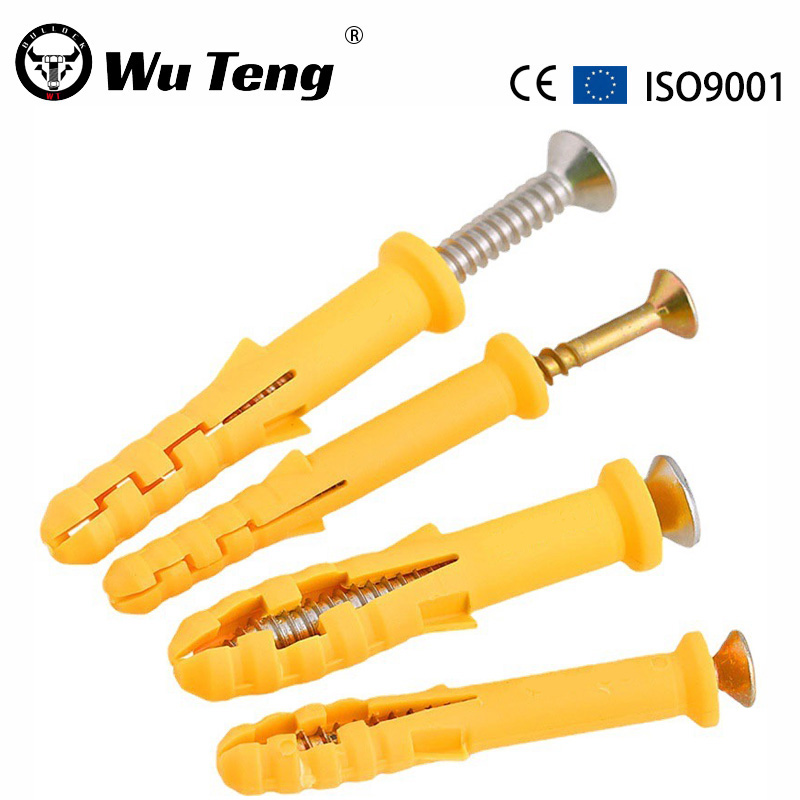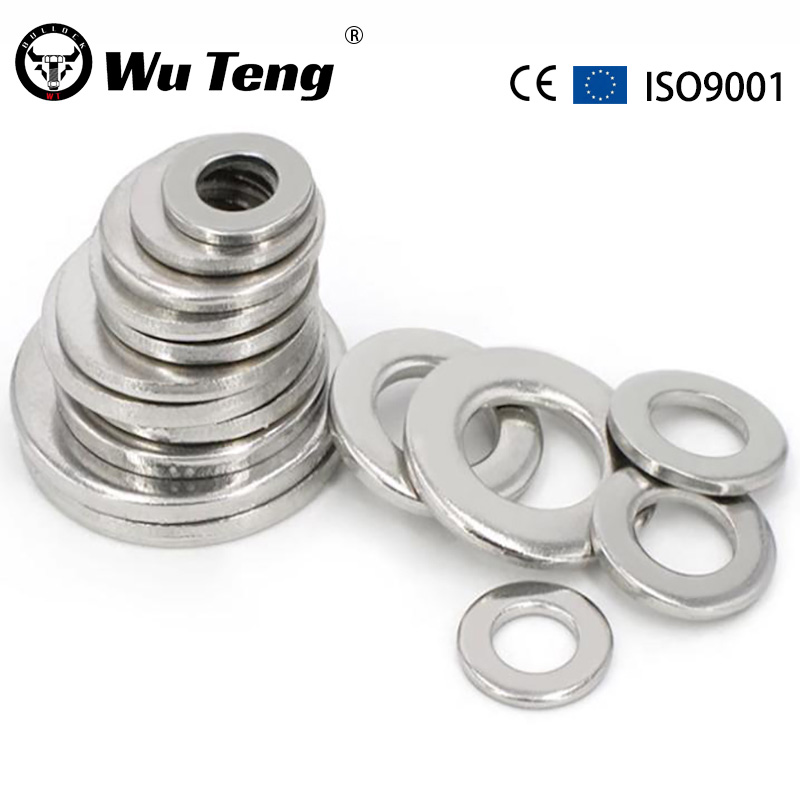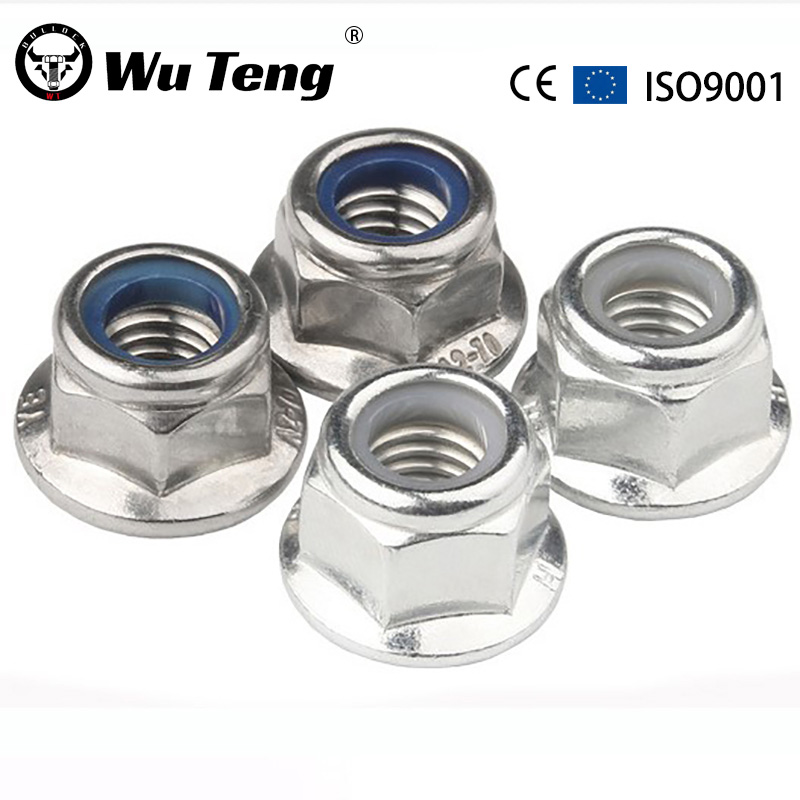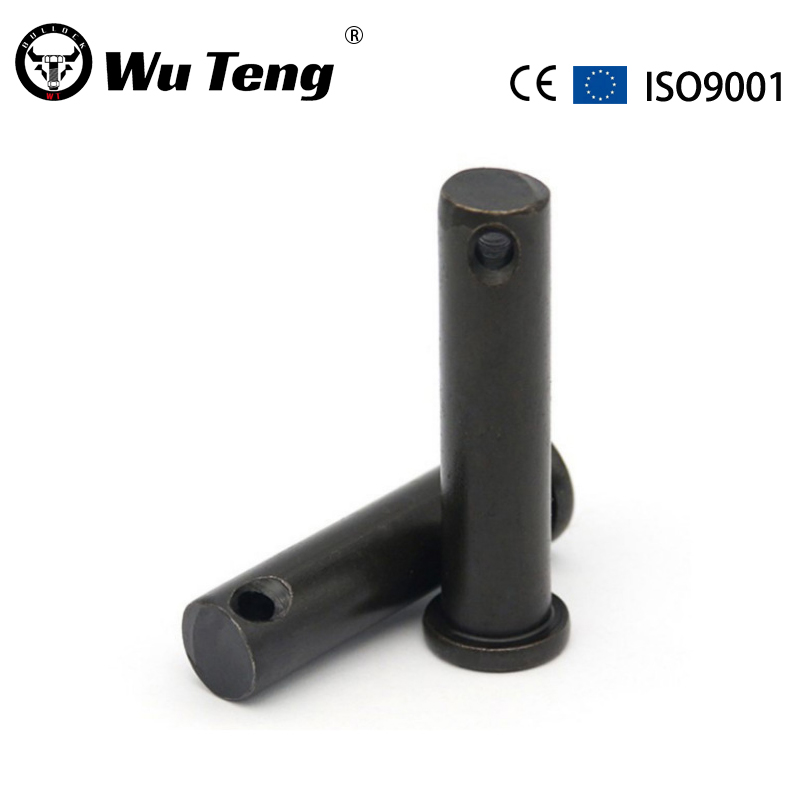
Products
Flat key
Flat key is a key that relies on two sides as working surfaces and transmits torque through the compression between the key and the keyway side. Flat keys are divided into three types: regular flat keys, thin flat keys, and directional flat keys. Ordinary flat keys have good centering, high positioning accuracy, and are easy to assemble. However, they cannot achieve axial fixation of parts on the shaft and are used for shafts that are high-speed or subjected to impact or variable loads; Thin flat keys are used for thin-walled structures and places with low torque transmission; The directional flat key is fixed to the shaft with screws, used in situations where the parts on the shaft do not move much along the axis.
1. Ordinary flat keys are the most widely used due to their simple structure, easy disassembly and assembly, good centering, and suitability for high-speed, variable load, and impact bearing situations.
2. The semi-circular key is shaped like a semicircle and can swing in the keyway to adapt to the shape of the bottom surface of the hub keyway. It is commonly used for connecting tapered shaft ends and in situations where the connection workload is not high. Like a tapered shaft head, it drives a regular A-type pulley to rotate through the connection of a semi-circular key.
3. Hook wedge keys are mainly used for tight key connections. After assembly, due to the influence of inclination, the shaft and the parts on the shaft are skewed and eccentric, making it unsuitable for high-precision connections.

